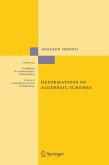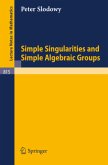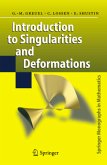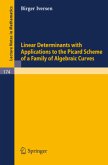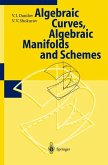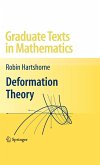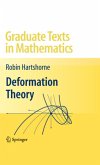This account of deformation theory in classical algebraic geometry over an algebraically closed field presents for the first time some results previously scattered in the literature, with proofs that are relatively little known, yet relevant to algebraic geometers. Many examples are provided. Most of the algebraic results needed are proved. The style of exposition is kept at a level amenable to graduate students with an average background in algebraic geometry.
In one sense, deformation theory is as old as algebraic geometry itself: this is because all algebro-geometric objects can be "deformed" by suitably varying the coef?cients of their de?ning equations, and this has of course always been known by the classical geometers. Nevertheless, a correct understanding of what "deforming" means leads into the technically most dif?cult parts of our discipline. It is fair to say that such technical obstacles have had a vast impact on the crisis of the classical language and on the development of the modern one, based on the theory of schemes and on cohomological methods. The modern point of view originates from the seminal work of Kodaira and Spencer on small deformations of complex analytic manifolds and from its for- lization and translation into the language of schemes given by Grothendieck. I will not recount the history of the subject here since good surveys already exist (e. g. [27], [138], [145], [168]). Today, while this area is rapidlydeveloping, a self-contained text covering the basic results of what we can call "classical deformation theory" seems to be missing. Moreover, a number of technicalities and "well-known" facts are scattered in a vast literature as folklore, sometimes with proofs available only in the complex analytic category. This book is an attempt to ?ll such a gap, at least p- tially.
In one sense, deformation theory is as old as algebraic geometry itself: this is because all algebro-geometric objects can be "deformed" by suitably varying the coef?cients of their de?ning equations, and this has of course always been known by the classical geometers. Nevertheless, a correct understanding of what "deforming" means leads into the technically most dif?cult parts of our discipline. It is fair to say that such technical obstacles have had a vast impact on the crisis of the classical language and on the development of the modern one, based on the theory of schemes and on cohomological methods. The modern point of view originates from the seminal work of Kodaira and Spencer on small deformations of complex analytic manifolds and from its for- lization and translation into the language of schemes given by Grothendieck. I will not recount the history of the subject here since good surveys already exist (e. g. [27], [138], [145], [168]). Today, while this area is rapidlydeveloping, a self-contained text covering the basic results of what we can call "classical deformation theory" seems to be missing. Moreover, a number of technicalities and "well-known" facts are scattered in a vast literature as folklore, sometimes with proofs available only in the complex analytic category. This book is an attempt to ?ll such a gap, at least p- tially.
From the reviews: "One of the goals of Springer's Grundlehren series is to provide reliable and thorough accounts of certain portions of mathematics. This volume by Edoardo Sernesi does just that, and hence fits the series well. ... So this is a book for algebraic geometers; for them, it'll prove to be a useful resource and reference." (Fernando Q. Gouvêa, MathDL, August, 2006) "Without any doubt, this is a masterly book on a highly advanced topic in algebraic geometry. ... The entire text is kept at a level that makes it suitable for graduate students ... . But even for experts and active researchers in algebraic geometry, this unique book on algebraic deformation theory offers a great deal of inspiration and new insights, too, and its future role as a standard source and reference book in the field can surely be taken for granted from now on." (Werner Kleinert, Zentralblatt MATH, Vol. 1102 (4), 2007) "The book under review gives an introduction to classical deformation theory using modern language, and is apparently unique among textbooks in the recent literature in that it is largely self-contained and covers the main topics ... . It will be attractive for graduate students with a basic knowledge of commutative algebra and algebraic geometry as a base for advanced lectures. The need for such a book was evident for a long time; the reviewer is happy to have it on his bookshelf." (Marko Roczen, Mathematical Reviews, Issue 2008 e)


